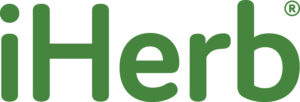WHAT IS ALASKA POLLOCK?
Alaska Pollock (Gadus chalcogrammus) is one of the most prolific of the 24 species of the Cod Family (Gadidae). It is the largest fishery for human food consumption in the world and the fifth most consumed fish species in the U.S. (1.2 lbs per person in 2012). Caught throughout the Bering Sea and Gulf of Alaska, the Alaska Pollock fishery is considered by many experts to be one of the best managed worldwide.
Alaskan fish are synonymous with American fish, accounting for more than half of all wild caught fish in the U.S. Ironically, even though Americans catch some of the world’s highest quality seafood, we export nearly one third of our entire catch.
The typical age of Alaska Pollock when caught is 3 to 5 years old (roughly 0.5 lbs to 1.5 lbs in weight), which is a similar age as the Alaska Salmon when caught. These short-lived fish do not bio-accumulate heavy metals and toxins in the way that older (trophic) predators do, such as sharks, grouper, or swordfish.
Alaska Pollock is also sometimes known by its common name “Walleye Pollock”. It used to be formally called by its Latin name Theragra chalcogramma, which is why you’ll still see that species name on our packaging. It was reclassified by the U.S. government in 2014 as a Gadus.
CAUGHT FOR FOOD
When talking about Fish Oil, it must be understood that most species sources are caught not for food but to grind up the entire fish into fishmeal and Fish Oil to be used for animal feed. Alaska Pollock as a source of Fish Oil is completely different, which is why talking about its status as a food fish is important.
There are three main food products produced from Alaska Pollock. The rest of the fish (sometimes called the trimmings) is turned into Fish Oil and fishmeal.
- Roe skein (egg sac) is the most valuable part of the fish, used to make a Japanese delicacy called “mentaiko”.
- Frozen fillets are used mostly in fish sticks and breaded portions for fish sandwiches or fish & chips.
- Minced flesh is washed to make a protein called surimi that, in the U.S., is required to be labeled as “imitation seafood” or “imitation crab”. Contrary to some opinions of it as a “fake food”, it’s actually a traditional Japanese seafood product; a kind of fish sausage. Many other fishing cultures have products that are similar, such as the Norwegian fiskeboller.




